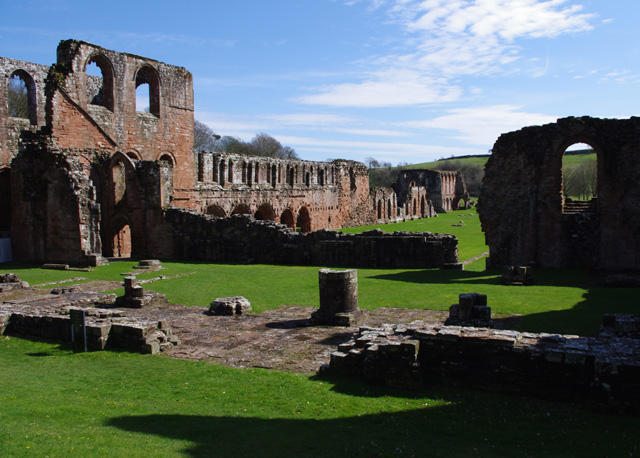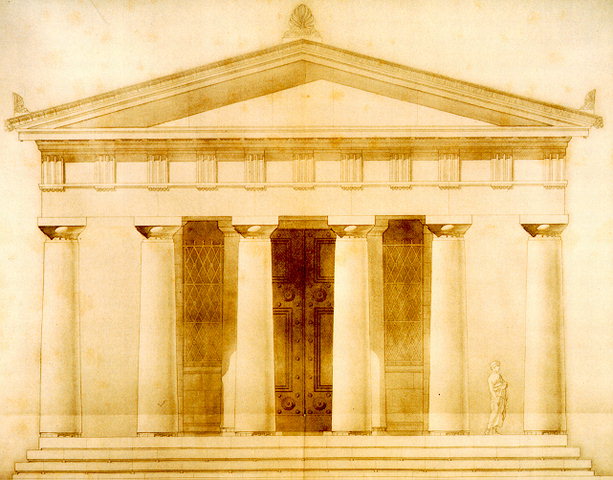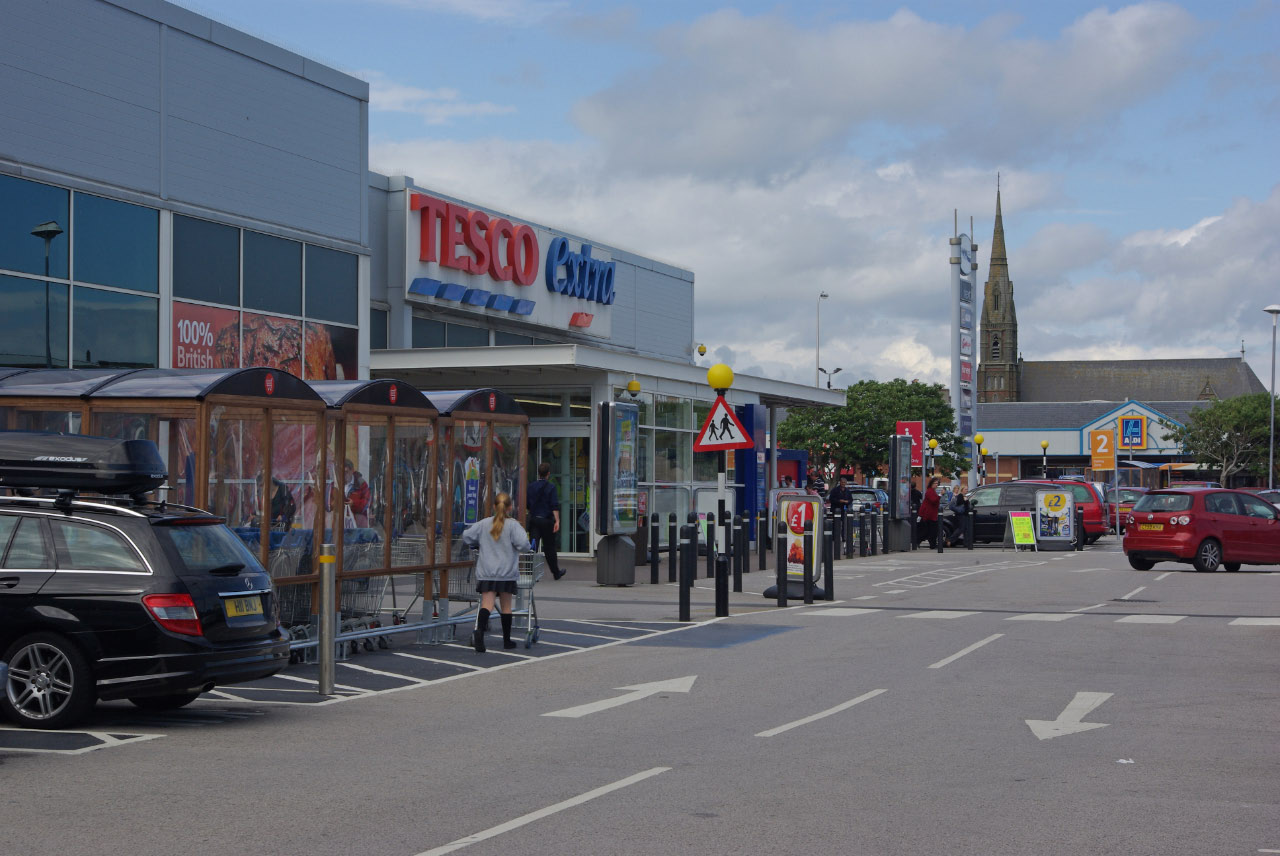|
Ritz Cinema, Barrow-in-Furness
The Ritz (later known as the ABC, Astra and Apollo) was a cinema located at the junction of Abbey Road and Holker Street in Barrow-in-Furness, Cumbria, England. The building was designed in a typical Art Deco-style by architect firm Drury & Gomersall and constructed in 1936 on a previously undeveloped site. Between 1961 and 1977 it was known simply as the ABC; after ABC Cinemas who took over ownership of the premises soon after completion. This changed to the Astra when the venue was bought by Hutchinson Leisure. In this period the cinema was completely refitted, adding two extra screens to the existing one. The largest of the screens seated 640 while the smaller two seated 260 each. In the last part of its functioning life the cinema was named the Apollo after again being purchased; by Apollo Leisure. 1999 saw the completion of Hollywood Park in Barrow and a 6-screen multiplex by Apollo Leisure. As a result, the redundant Apollo Cinema on Abbey Road closed down. Numerous pr ... [...More Info...] [...Related Items...] OR: [Wikipedia] [Google] [Baidu] |
Movie Theater
A movie theater (American English), cinema (British English), or cinema hall (Indian English), also known as a movie house, picture house, the movies, the pictures, picture theater, the silver screen, the big screen, or simply theater is a building that contains auditoria for viewing films (also called movies) for entertainment. Most, but not all, movie theaters are commercial operations catering to the general public, who attend by purchasing a ticket. The film is projected with a movie projector onto a large projection screen at the front of the auditorium while the dialogue, sounds, and music are played through a number of wall-mounted speakers. Since the 1970s, subwoofers have been used for low-pitched sounds. Since the 2010s, the majority of movie theaters have been equipped for Digital cinema#Digital projection, digital cinema projection, removing the need to create and transport a physical film stock#Intermediate and print stocks, film print on a heavy reel. A great ... [...More Info...] [...Related Items...] OR: [Wikipedia] [Google] [Baidu] |
Abbey Road, Barrow-in-Furness
Abbey Road is the principal north to south arterial road through Barrow-in-Furness, Cumbria, England. Background Abbey Road's name derives from Furness Abbey, a former Cistercian monastery along the route of the road. Beginning at Market Street, in the centre of Dalton-in-Furness, the road runs south and terminates at Hindpool Road, close to the centre of Barrow where the A590 and A5087 merge. Abbey Road predates Barrow itself although it was substantially upgraded to its current appearance during the mid-19th century, when the town was undergoing dramatic growth. The of Abbey Road that runs through Barrow is a tree-lined boulevard with multiple lanes, while the northern section of the road beyond Mill Brow is single lane, winding and more rural in nature. Sites along Abbey Road include Dalton town centre, Furness General Hospital, Barrow Park, Barrow-in-Furness railway station, Barrow town centre and several of Barrow's retail parks. Until 1932, the Barrow-in-Furness T ... [...More Info...] [...Related Items...] OR: [Wikipedia] [Google] [Baidu] |
Barrow-in-Furness
Barrow-in-Furness is a port town in Cumbria, England. Historically in Lancashire, it was incorporated as a municipal borough in 1867 and merged with Dalton-in-Furness Urban District in 1974 to form the Borough of Barrow-in-Furness. In 2023 the borough will merge with Eden and South Lakeland districts to form a new unitary authority; Westmorland and Furness. At the tip of the Furness peninsula, close to the Lake District, it is bordered by Morecambe Bay, the Duddon Estuary and the Irish Sea. In 2011, Barrow's population was 56,745, making it the second largest urban area in Cumbria after Carlisle. Natives of Barrow, as well as the local dialect, are known as Barrovian. In the Middle Ages, Barrow was a small hamlet within the parish of Dalton-in-Furness with Furness Abbey, now on the outskirts of the town, controlling the local economy before its dissolution in 1537. The iron prospector Henry Schneider arrived in Furness in 1839 and, with other investors, opened th ... [...More Info...] [...Related Items...] OR: [Wikipedia] [Google] [Baidu] |
Cumbria
Cumbria ( ) is a ceremonial and non-metropolitan county in North West England, bordering Scotland. The county and Cumbria County Council, its local government, came into existence in 1974 after the passage of the Local Government Act 1972. Cumbria's county town is Carlisle, in the north of the county. Other major settlements include Barrow-in-Furness, Kendal, Whitehaven and Workington. The administrative county of Cumbria consists of six districts (Allerdale, Barrow-in-Furness, Carlisle, Copeland, Eden and South Lakeland) and, in 2019, had a population of 500,012. Cumbria is one of the most sparsely populated counties in England, with 73.4 people per km2 (190/sq mi). On 1 April 2023, the administrative county of Cumbria will be abolished and replaced with two new unitary authorities: Westmorland and Furness (Barrow-in-Furness, Eden, South Lakeland) and Cumberland (Allerdale, Carlisle, Copeland). Cumbria is the third largest ceremonial county in England by area. It is ... [...More Info...] [...Related Items...] OR: [Wikipedia] [Google] [Baidu] |
England
England is a country that is part of the United Kingdom. It shares land borders with Wales to its west and Scotland to its north. The Irish Sea lies northwest and the Celtic Sea to the southwest. It is separated from continental Europe by the North Sea to the east and the English Channel to the south. The country covers five-eighths of the island of Great Britain, which lies in the North Atlantic, and includes over 100 smaller islands, such as the Isles of Scilly and the Isle of Wight. The area now called England was first inhabited by modern humans during the Upper Paleolithic period, but takes its name from the Angles, a Germanic tribe deriving its name from the Anglia peninsula, who settled during the 5th and 6th centuries. England became a unified state in the 10th century and has had a significant cultural and legal impact on the wider world since the Age of Discovery, which began during the 15th century. The English language, the Anglican Church, and Eng ... [...More Info...] [...Related Items...] OR: [Wikipedia] [Google] [Baidu] |
Art Deco
Art Deco, short for the French ''Arts Décoratifs'', and sometimes just called Deco, is a style of visual arts, architecture, and product design, that first appeared in France in the 1910s (just before World War I), and flourished in the United States and Europe during the 1920s and 1930s. Through styling and design of the exterior and interior of anything from large structures to small objects, including how people look (clothing, fashion and jewelry), Art Deco has influenced bridges, buildings (from skyscrapers to cinemas), ships, ocean liners, trains, cars, trucks, buses, furniture, and everyday objects like radios and vacuum cleaners. It got its name after the 1925 Exposition internationale des arts décoratifs et industriels modernes (International Exhibition of Modern Decorative and Industrial Arts) held in Paris. Art Deco combined modern styles with fine craftsmanship and rich materials. During its heyday, it represented luxury, glamour, exuberance, and faith in socia ... [...More Info...] [...Related Items...] OR: [Wikipedia] [Google] [Baidu] |
ABC Cinemas
ABC Cinemas (Associated British Cinemas) was a cinema chain in the United Kingdom. Originally a wholly owned subsidiary of Associated British Picture Corporation (ABPC), it operated between the 1930s and the 1980s. The brand name was reused in the 1990s until 2000. History Early years ABC Cinemas was established in 1927 by solicitor John Maxwell by merging three smaller Scottish cinema circuits. It became a wholly owned cinema subsidiary of British International Pictures when it was merged with the production arm of British National Pictures Studios, which had been formed by Maxwell in 1926. During the 1930s, it grew rapidly by acquisitions and an ambitious building programme under the direction of chief architect W. R. Glen, who had been appointed in about 1929 and maintained a distinct house style. It acquired First National Pathé Limited which gave it trading connections to First National Pictures in the United States. Existing cinemas which could not be re-modelled wer ... [...More Info...] [...Related Items...] OR: [Wikipedia] [Google] [Baidu] |
Apollo Cinemas
Apollo, grc, Ἀπόλλωνος, Apóllōnos, label=genitive , ; , grc-dor, Ἀπέλλων, Apéllōn, ; grc, Ἀπείλων, Apeílōn, label=Arcadocypriot Greek, ; grc-aeo, Ἄπλουν, Áploun, la, Apollō, la, Apollinis, label=genitive, , ; , is one of the Olympian deities in classical Greek and Roman religion and Greek and Roman mythology. The national divinity of the Greeks, Apollo has been recognized as a god of archery, music and dance, truth and prophecy, healing and diseases, the Sun and light, poetry, and more. One of the most important and complex of the Greek gods, he is the son of Zeus and Leto, and the twin brother of Artemis, goddess of the hunt. Seen as the most beautiful god and the ideal of the '' kouros'' (ephebe, or a beardless, athletic youth), Apollo is considered to be the most Greek of all the gods. Apollo is known in Greek-influenced Etruscan mythology as ''Apulu''. As the patron deity of Delphi (''Apollo Pythios''), Apollo is an or ... [...More Info...] [...Related Items...] OR: [Wikipedia] [Google] [Baidu] |
Hindpool Retail Parks
The Hindpool Retail Parks are a set of four conjoined retail parks in the Hindpool area of Barrow-in-Furness, England, United Kingdom (with the exception of one which straddles the border with Central Barrow). Some thirty stores and leisure facilities contain a total of of retail space (around one quarter of the borough's of retail floorspace). The four retail parks are Cornerhouse Retail Park, Cornmill Crossing, Hindpool Retail Park and Hollywood Park. The largest and only other retail park in Barrow is Walney Road Retail Park - Pound Stretcher, Argos Extra, Asda, Home Bargains, Matalan and Stollers. Site history All of the retail parks were built on former industrial land that during the early to mid-20th century played a major role in not only Barrow's but the entire country's economy. Hindpool Retail Park, alongside Craven Park stadium were built upon the site of the Barrow Jute Works which operated from 1870 to 1948. Cornerhouse Park and Cornmill Crossing were built on ... [...More Info...] [...Related Items...] OR: [Wikipedia] [Google] [Baidu] |
Emlyn Hughes House
Emlyn Hughes House is a landmark four-story office building located at the intersection of Abbey Road and Holker Street in Barrow-in-Furness, England. It is named after local footballer Emlyn Hughes who captained both Liverpool F.C. and the England national team, a statue of Hughes is also located outside of the building. Emlyn Hughes House replaces the Art Deco Ritz Cinema and was designed by Bowker Sadler architects and built by Capita Symonds for Barrow Borough Council. There was much speculation that the development would become a 'white elephant A white elephant is a possession that its owner cannot dispose of, and whose cost, particularly that of maintenance, is out of proportion to its usefulness. In modern usage, it is a metaphor used to describe an object, construction project, sch ...' because a year after completion in 2008 the whole building remained vacant. In April 2012, Glasgow-based Barrhead Travel opened its first office in England at Emlyn Hughes Hous ... [...More Info...] [...Related Items...] OR: [Wikipedia] [Google] [Baidu] |
Roxy Cinema, Barrow-in-Furness
The Roxy Cinema (later known as the Odeon and the Classic) on Cavendish Street in Barrow-in-Furness, Cumbria, England is a former cinema, and one of only two remaining original cinema buildings in the town (the other being Salthouse Pavilion). Built in 1937 in the Streamline Moderne-style it replaced a late 19th-century theater also called the Roxy. The cinema was purchased by Odeon in 1943, and again by Classic Cinemas in 1967. Throughout its various forms, the cinema only had one screen, although it could seat up to 1,200 people. Its days as a cinema ended in 1976 when it was soon converted into a nightclub. The Champers nightclub closed in 1984 and the Roxy Cinema building lay vacant until 1991 when a new nightclub named Manhattans opened. Mahattans ultimately met a similar demise a decade on, although 2011 saw the rejuvenation of the Manhattans brand which reopened a venue within the building. An American themed restaurant/diner and bar 'Hollywood' is also located on the groun ... [...More Info...] [...Related Items...] OR: [Wikipedia] [Google] [Baidu] |
Art Deco Architecture In England
Art is a diverse range of human activity, and resulting product, that involves creative or imaginative talent expressive of technical proficiency, beauty, emotional power, or conceptual ideas. There is no generally agreed definition of what constitutes art, and its interpretation has varied greatly throughout history and across cultures. In the Western tradition, the three classical branches of visual art are painting, sculpture, and architecture. Theatre, dance, and other performing arts, as well as literature, music, film and other media such as interactive media, are included in a broader definition of the arts. Until the 17th century, ''art'' referred to any skill or mastery and was not differentiated from crafts or sciences. In modern usage after the 17th century, where aesthetic considerations are paramount, the fine arts are separated and distinguished from acquired skills in general, such as the decorative or applied arts. The nature of art and related concep ... [...More Info...] [...Related Items...] OR: [Wikipedia] [Google] [Baidu] |




_interior.jpg)



